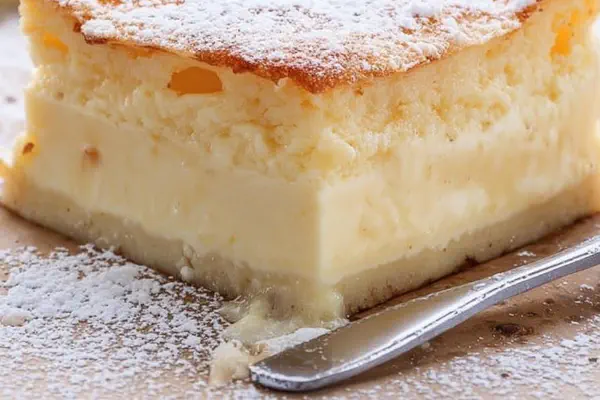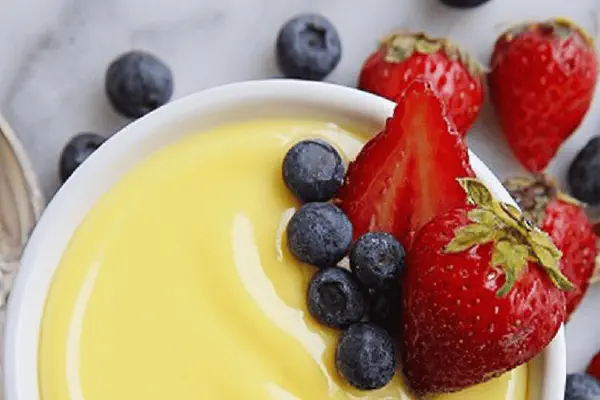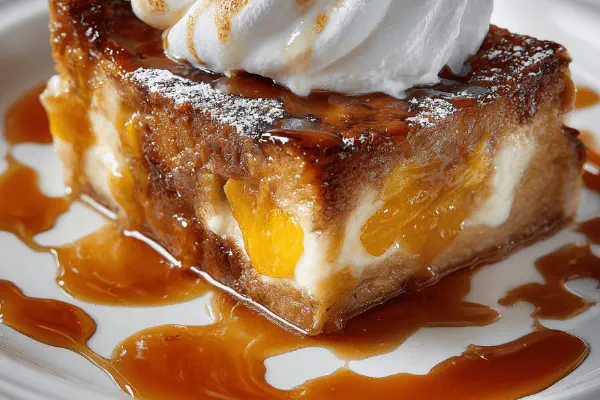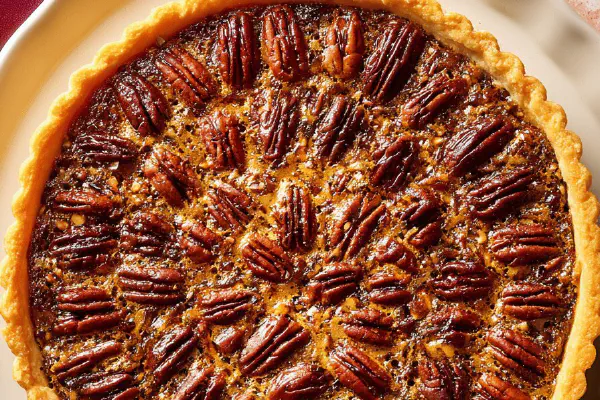Featured Recipe
Sea Buckthorn Meringue Tart
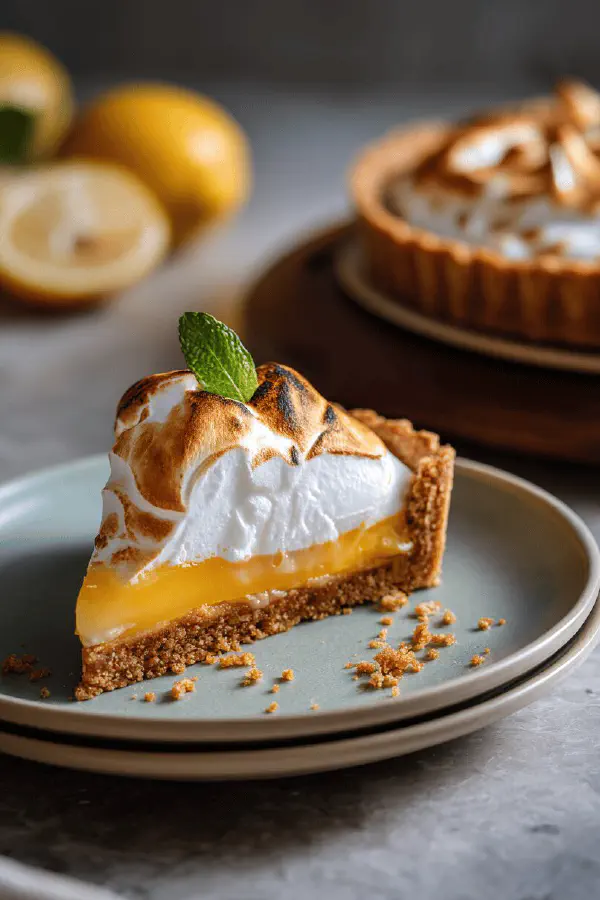
By Kate
"
Crisp biscuit crumb base with a tangy sea buckthorn custard, topped with a toasted cloud of meringue. Uses gelatin for stability, fresh citrus twist, and a hint of cardamom in the filling. Balanced sweetness against bright fruit acidity. No nuts, easy to freeze halfway. Requires patience watching custard thicken gently over low heat. Visual cues guide doneness rather than strict times. Meringue tips included. Stores well up to three days chilled.
"
Prep:
40 min
Cook:
25 min
Total:
Serves:
8 servings
dessert
tart
meringue
sea buckthorn
custard
Introduction
Quicksand crust, tart bite from sea buckthorn, fluffy meringue on top. Different. No nut allergens here. Gelatin for custard hold, lemon for snap. Cardamom sneaks in slots flavor beyond expected. Watch custard closely, patience pays off—the tell is thickness coating a spoon without curdling or burning. Meringue is stabilized by starch slurry; no weeping halfway through serving. Torch that meringue just enough to burnished gold, better than broiler scorch. Chill, serve within days, or freeze early stages. Keeps texture intact, flavor punch maintained. Warning: beware too much haste, especially at custard. Worth the wait.
Ingredients
Crust
- 140 g (1 cup plus 2 tbsp) graham cracker crumbs
- 65 g (1/4 cup plus 1 tbsp) unsalted butter, melted
- 12 ml (3 tsp) caster sugar
- 1 ml (1/4 tsp) fine sea salt
- 3 ml (3/4 tsp) powdered gelatin
- 70 ml (1/3 cup plus 1 tsp) cold water
- 200 g (1 1/2 cups) frozen sea buckthorn berries
- 50 g (1/4 cup) granulated sugar
- 2 large eggs
- 1 large egg yolk
- 45 g (3 tbsp) cold unsalted butter, diced
- zest of half a lemon
- 1/4 tsp ground cardamom (optional)
- 5 ml (1 tsp) cornstarch
- 20 ml (4 tsp) cold water
- 2 large egg whites, room temperature
- 40 g (3 tbsp) caster sugar
Sea Buckthorn Cream
Meringue
About the ingredients
Never underestimate crumbs quality for crust. Fresh graham crumbs, not overprocessed, give texture. Butter measured accurately ensures proper hydration—too much, soggy; too little, crumbly. Sugar quantity adjusted down slightly to let fruit shine. For cream, powdered gelatin blooms better than sheets in home kitchens; source good powder. Frozen sea buckthorn essential for consistent acidity; if unavailable, try substituting with tart apricot preserves but reduce added sugar accordingly to keep balance. Lemon zest isn’t optional—adds brightness that lifts heavy butter in custard. Cardamom is a wild card but elevates aroma; omit if not on hand. Meringue stabilized with cornstarch slurry—don’t skip or risk weep. Egg whites at room temp whip better, dry bowl and whisk critical for stiff peaks.
Method
Crust
- Place oven rack in middle position. Preheat oven to 175 C (350 F).
- Combine crumbs, melted butter, sugar, and salt in a bowl. Mix until texture resembles damp sand.
- Press firmly into the bottom and up the sides of a 23 cm (9 inch) glass tart pan. No gaps or thin spots.
- Bake 12-14 minutes until edges just start browning and crackling aroma releases. Let cool to lukewarm before adding filling.
- Sprinkle gelatin over 15 ml (1 tbsp) cold water. Bloom 7 minutes—should swell and soften.
- Meanwhile, put berries in a small saucepan with remaining 55 ml cold water. Heat over medium, stirring occasionally.
- Once berries burst and release bright orange liquid (watch for popping sounds), remove from heat.
- Puree with an immersion blender or in a countertop blender until smooth. Strain through fine mesh into a bowl to remove seeds and bits. Discard solids.
- Clean the saucepan. Whisk together sugar, whole eggs, and yolk in a separate bowl.
- Slowly pour strained juice into eggs, whisking constantly to avoid cooking.
- Pour mixture back into saucepan. Cook over low heat, stirring vigorously and scraping bottom and edges constantly.
- Look for custard to thicken but not scramble. Check by coating a spoon; it should leave a clear path when you run your finger across the back (nappe consistency). This may take 8-12 minutes. Patience key.
- Remove from heat, add bloomed gelatin and stir until melted.
- Let cool while stirring occasionally until temperature reaches about 37 C (99 F)—warm enough to melt butter but not hot enough to break eggs.
- Fold in chilled butter bits, lemon zest, and cardamom until smooth.
- Pour cream into cooled crust. Cover directly with plastic wrap to prevent skin. Chill minimum 1 hour to set. Can freeze here.
- Combine cornstarch and water until smooth slurry.
- Whip egg whites with electric mixer until soft peaks form.
- Slowly add sugar in small increments, whipping continuously until firm peaks and glossy texture form. Meringue should hold stiff peaks but still look moist.
- Gently fold in starch slurry to stabilize meringue and prevent weeping.
- Spread meringue evenly over chilled sea buckthorn cream, cover edges to seal crust fully.
- Torch surface slowly until golden brown and toasted, or use oven's broiler for 1-2 minutes watching carefully to avoid burning.
- Refrigerate until serving. Tart keeps 3 days refrigerated. Meringue texture will soften over time.
- If no sea buckthorn, substitute with tart orange marmalade, fresh grapefruit or apricot preserves (adjust sugar).
- Gelatin essential for creamy firmness; powdered preferred for predictable bloom.
- Curd thickens slowly to avoid graininess — stirring and temp control critical. Never rush with high heat.
- If meringue starts to weep or liquid forms, dissolve more cornstarch in water and fold in gently to re-stabilize.
- Chilling tart below freezing after cream step locks it in for later without texture loss.
- Use glass or metal tart pan for even heat transfer and easy slicing.
- Don't skip lemon zest; brightness cuts fat and richness in buttered cream.
- Cardamom optional but adds warm complexity to fruit tart.
- Torch gives control over browning. Broiler works but watch closely.
Sea Buckthorn Cream
Meringue
Notes & Problems Solved
Technique Tips
Press crust firmly, use bottom of a glass for even compaction. Watch crust edges as they bake—should turn light golden, not burnt. Custard needs constant attention—stir, scrape, whisk to avoid lumps and scorching—low, steady heat wins here, no shortcuts. Bloom gelatin first, always cold water. Strain purees to avoid grainy texture. Check custard by spoon test; if it coats and leaves a clear line, ready. Stirring butter in cold keeps custard shiny and smooth, avoid melting if cream too hot. All plastic wrap contact surfaces to prevent skin formation on custard. Whip whites slowly for best foam, gradually add sugar to get dense peaks. Incorporate starch slurry last; folds gently, no deflate. Meringue torch carefully—small bursts, keep rotating. Store tart covered and chilled, meringue softens but flavor holds. Make ahead by freezing after cream layer, then thaw fully before meringue step.
Chef's Notes
- 💡 Check the crust often while baking. A golden edge means it’s ready. Look for light crackling sounds. Press crust firmly. No gaps allowed. Use the glass bottom to ensure even pressure. Too much butter? Crust becomes soggy, not good.
- 💡 When making custard, temperature control is key. Stir constantly. Watch for that spoon test. Thick enough to leave a clear line but not lumpy. If it curdles, turn down heat quickly. Constant scraping of the pan bottom helps prevent burning or sticking.
- 💡 Meringue can weep if not handled properly. Fold in cornstarch slurry last for stability. If you see liquid forming, mix more cornstarch with water as a backup. This stops the weeping. Room temperature egg whites whip up better, too.
- 💡 Use fresh sea buckthorn or opt for tart substitutes if needed. Marmalade or apricot preserves can work. Adjust sugar balance based on substitute acidity. Always strain purees to avoid texture issues.
- 💡 For a great toasted meringue, use a torch. Even golden color across the top is the goal. If using broiler, stay nearby. One minute too long can lead to burning. Small bursts from the torch create better control.
Kitchen Wisdom
How to store the tart?
Keep it in the fridge covered. Meringue softens in time but flavor remains. Eat within three days for best experience. Can freeze before meringue step.
What if custard doesn’t thicken?
Low heat and patience matter. If it seems too runny, keep stirring until you get that line test done. Emergency? Return to low heat for a bit longer.
Can I use fresh berries instead of frozen?
Sure, but check acidity. You may have to tweak sugar in the filling. Fresh berries need to burst open though, might take longer.
How do I prevent meringue from collapsing?
Stabilization with cornstarch is crucial. If it's warm, chill before serving. Cold meringue holds together better. Use cold egg whites for initial foaming.
